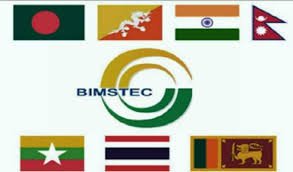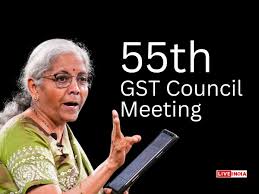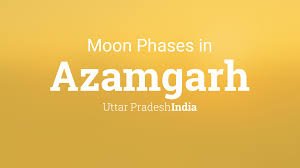A Comprehensive Guide to the Prime Ministers of India
The role of the Prime Minister of India is pivotal in shaping the nation’s future. Since India gained independence in 1947, the Prime Ministers have played crucial roles in policy-making, governance, and international relations. Understanding the contributions of each Prime Minister is vital for students preparing for government exams, including those for teachers, police officers, banking, railways, defense, and civil services.
Jawaharlal Nehru: The Architect of Modern India
Jawaharlal Nehru, the first Prime Minister of India, served from 1947 to 1964. His tenure was marked by efforts to build a secular, socialist state. Nehru implemented significant economic reforms and established institutions of higher learning, which laid the foundation for India’s scientific and technological advancements.
Lal Bahadur Shastri: Promoter of Green Revolution
Lal Bahadur Shastri succeeded Nehru and served as Prime Minister from 1964 to 1966. He is remembered for promoting the Green Revolution in India, which significantly increased food grain production. His slogan, “Jai Jawan Jai Kisan,” emphasized the importance of soldiers and farmers in nation-building.
Indira Gandhi: The Iron Lady of India
Indira Gandhi, the first and only female Prime Minister of India, served from 1966 to 1977 and then again from 1980 until her assassination in 1984. Her tenure was marked by significant events such as the nationalization of banks, the liberation of Bangladesh, and the controversial Emergency period from 1975 to 1977.
Rajiv Gandhi: The Youngest Prime Minister
Rajiv Gandhi, who became the youngest Prime Minister at the age of 40, served from 1984 to 1989. His tenure focused on modernizing the telecommunications sector, expanding higher education, and promoting technological advancements. Rajiv Gandhi’s vision laid the groundwork for India’s IT revolution.
Atal Bihari Vajpayee: The Statesman Prime Minister
Atal Bihari Vajpayee served three terms as Prime Minister, with his longest tenure from 1998 to 2004. He is known for his efforts in improving India’s infrastructure, initiating the Golden Quadrilateral project, and advancing India’s nuclear program. Vajpayee’s leadership was instrumental in boosting India’s global standing.
Narendra Modi: The Current Prime Minister
Narendra Modi, the current Prime Minister, has been in office since 2014. His tenure has seen significant economic reforms, the introduction of the Goods and Services Tax (GST), the Digital India initiative, and various social welfare schemes. Modi’s leadership continues to influence India’s domestic and international policies.

Why this News is Important
Essential for Government Exam Aspirants
Understanding the history and contributions of India’s Prime Ministers is crucial for aspirants of various government exams. Knowledge of political history helps in answering questions related to governance, policy-making, and historical events, which are common in exams for positions such as IAS, PSC, and others.
Insight into India’s Political Evolution
The article provides a detailed overview of India’s political evolution through its Prime Ministers. This insight is valuable for students to comprehend how different leaders have shaped the nation’s socio-economic landscape, aiding in a holistic understanding of India’s development.
Relevance to Current Affairs
Keeping abreast of the current and past leadership helps students stay relevant with current affairs, an integral part of competitive exams. Knowing the historical context and significant contributions of each Prime Minister can enhance the depth of understanding in essays and interviews.
Historical Context: Evolution of Prime Ministership in India
Post-Independence Leadership
Post-independence, Jawaharlal Nehru’s leadership was crucial in stabilizing India as a new nation-state. His policies and vision set the trajectory for India’s future growth and international stance.
Period of Economic Reforms
The leadership from Lal Bahadur Shastri to Indira Gandhi saw India through crucial economic reforms, agricultural advancements, and political challenges. These leaders’ decisions were instrumental in shaping the economic and social policies that still impact India today.
Modern Technological and Infrastructural Developments
Leaders like Rajiv Gandhi and Atal Bihari Vajpayee focused on modernizing India’s infrastructure and technological capabilities. Their contributions were significant in positioning India as a rising global power.
Contemporary Leadership
Narendra Modi’s tenure reflects contemporary leadership challenges and achievements, focusing on economic reforms, digitalization, and international diplomacy. His policies continue to influence India’s trajectory in the 21st century.
Key Takeaways from “A Comprehensive Guide to the Prime Ministers of India”
| Serial No. | Key Takeaway |
|---|---|
| 1 | Jawaharlal Nehru’s tenure set the foundation for modern India’s scientific and educational infrastructure. |
| 2 | Lal Bahadur Shastri promoted the Green Revolution, significantly increasing India’s food grain production. |
| 3 | Indira Gandhi’s leadership saw major events like the nationalization of banks and the Emergency period. |
| 4 | Rajiv Gandhi modernized telecommunications and expanded higher education, paving the way for the IT revolution. |
| 5 | Atal Bihari Vajpayee’s initiatives in infrastructure and nuclear advancements boosted India’s global standing. |
Important FAQs for Students from this News
Q1: Who was the first Prime Minister of India?
A: Jawaharlal Nehru was the first Prime Minister of India, serving from 1947 to 1964.
Q2: What is Lal Bahadur Shastri best known for?
A: Lal Bahadur Shastri is best known for promoting the Green Revolution in India and coining the slogan “Jai Jawan Jai Kisan.”
Q3: Who was the first female Prime Minister of India?
A: Indira Gandhi was the first and only female Prime Minister of India.
Q4: Which Prime Minister initiated the Golden Quadrilateral project?
A: Atal Bihari Vajpayee initiated the Golden Quadrilateral project.
Q5: What are some key initiatives of Narendra Modi’s tenure?
A: Key initiatives of Narendra Modi’s tenure include the Goods and Services Tax (GST), the Digital India initiative, and various social welfare schemes.
Q6: How did Rajiv Gandhi contribute to India’s technological advancement?
A: Rajiv Gandhi modernized the telecommunications sector and expanded higher education, laying the groundwork for India’s IT revolution.
Q7: What significant event happened during Indira Gandhi’s tenure?
A: During Indira Gandhi’s tenure, the Emergency period (1975-1977) and the nationalization of banks were significant events.
Q8: What was Jawaharlal Nehru’s vision for India?
A: Jawaharlal Nehru envisioned a secular, socialist state with significant focus on scientific and technological advancements.
Some Important Current Affairs Links














